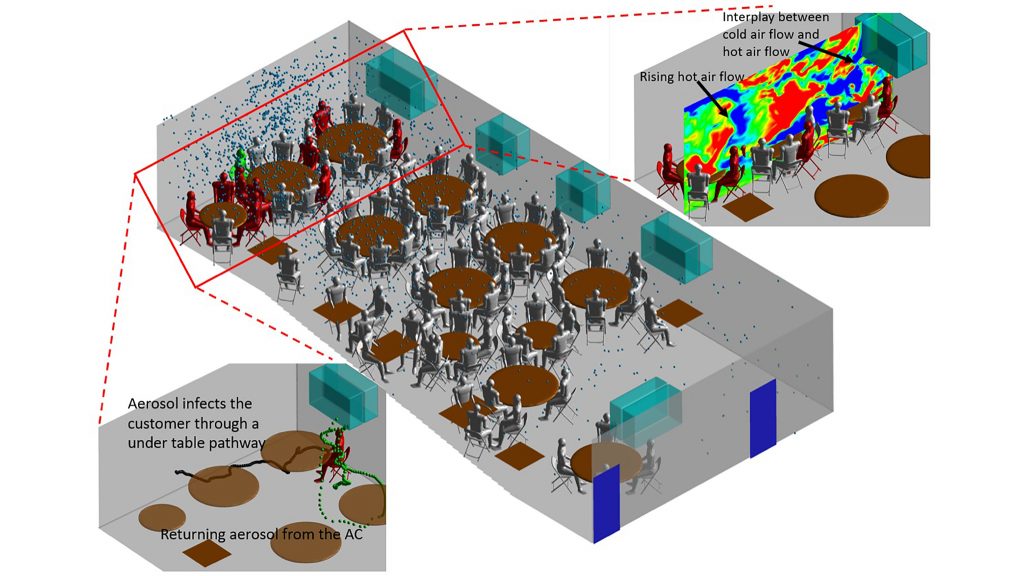From the Journal: Physics of Fluids
WASHINGTON, February 9, 2021 — The detailed physical processes and pathways involved in the transmission of COVID-19 are still not well understood. Researchers decided to use advanced computational fluid dynamics tools on supercomputers to deepen understanding of transmission and provide a quantitative assessment of how different environmental factors influence transmission pathways and airborne infection risk.
A restaurant outbreak in China was widely reported as strong evidence of airflow-induced transmission of COVID-19. But it lacked a detailed investigation about exactly how transmission occurred.

Why did some people get infected while others within the same area did not? What specific role did ventilation and air conditioning play in disease transmission? Exploring these questions can help develop more pinpointed preventative measures to improve our safety.
In Physics of Fluids, from AIP Publishing, Jiarong Hong and colleagues at the University of Minnesota report using advanced simulation methods to capture the complex flows that occur when the cold airflow from air conditioners interacts with the hot plume from a dining table and the transport of virus-loading particles within such flows.
“Our simulation captures various physical factors, including turbulent air flow, thermal effect, aerosol transport in turbulence, limited filtration efficiency of air conditioners, as well as the complex geometry of the space, all of which play a role in airborne transmission,” said Hong.
Although many computer simulation studies of airborne transmission of COVID-19 have been conducted recently, few directly link the prediction of high-fidelity computational fluid dynamics simulation with the actual infection outbreaks reported through contact tracing.
This work is the first realistic case simulated and linked directly with the prediction of simulation.
“It was enabled by advanced computational tools used in our simulation, which can capture the complex flows and aerosol transport and other multiphysics factors involved in a realistic setting,” Hong said.
The results show a remarkable direct linkage between regions of high aerosol exposure index and the reported infection patterns within the restaurant, which provides strong support to airborne transmission in this widely reported outbreak.
By using flow structure analysis and reverse-time tracing of aerosol trajectories, the researchers further pinpointed two potential transmission pathways that are currently being overlooked: the transmission caused by aerosols rising from beneath a table and transmission due to reentry aerosols associated with limited filtration efficiency of air conditioners.
“Our work highlights the need for more preventive measures, such as shielding more properly underneath the table and improving the filtration efficiency of air conditioners,” Hong said. “More importantly, our research demonstrates the capability and value of high-fidelity computer simulation tools for airborne infection risk assessment and the development of effective preventive measures.”
###
For more information:
Larry Frum
media@aip.org
301-209-3090
Article Title
Simulation-based study of COVID-19 outbreaks associated with air-conditioning in a restaurant
Authors
Han Liu, Sida He, Lian Shen and Jiarong Hong
Author Affiliations
University of Minnesota
